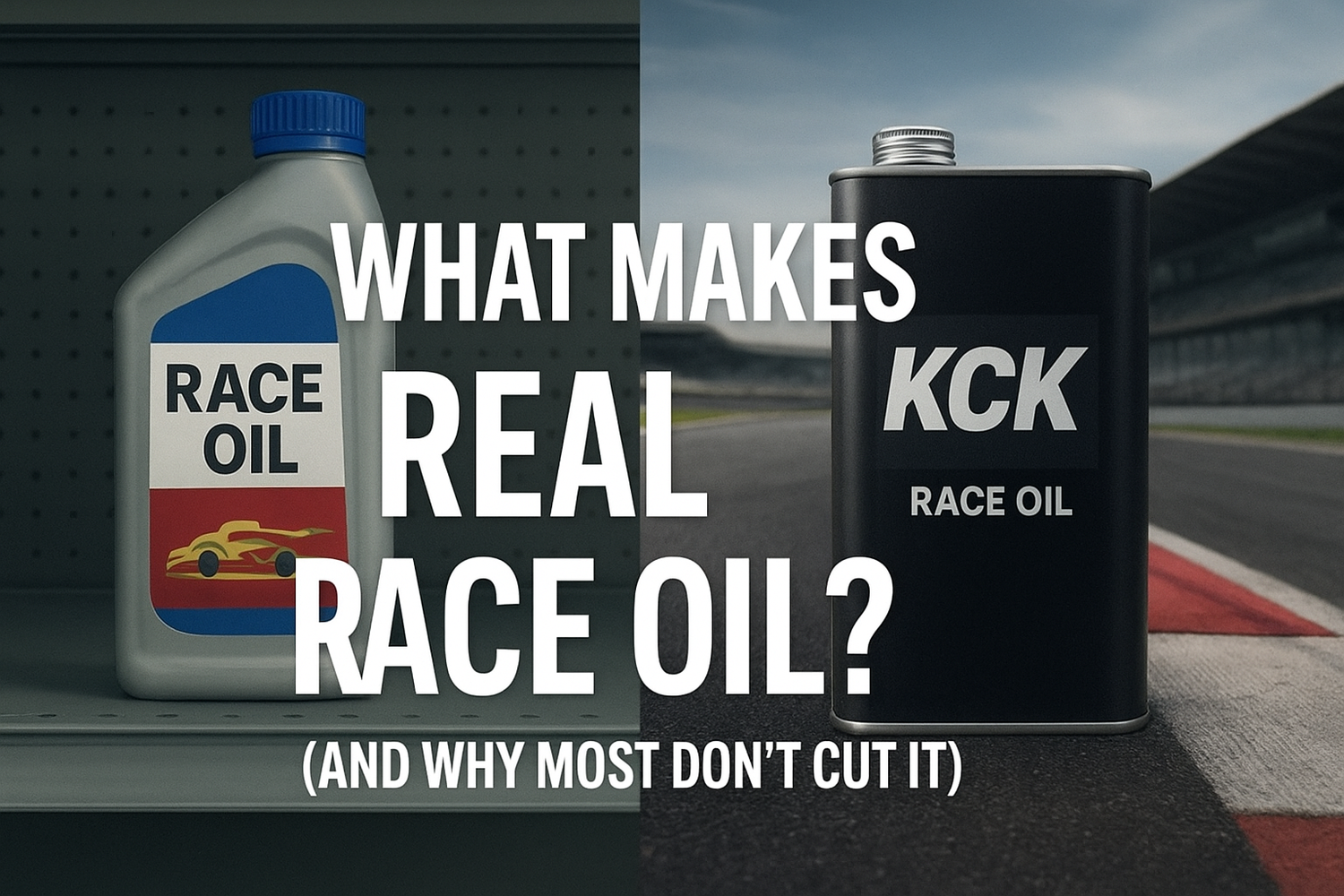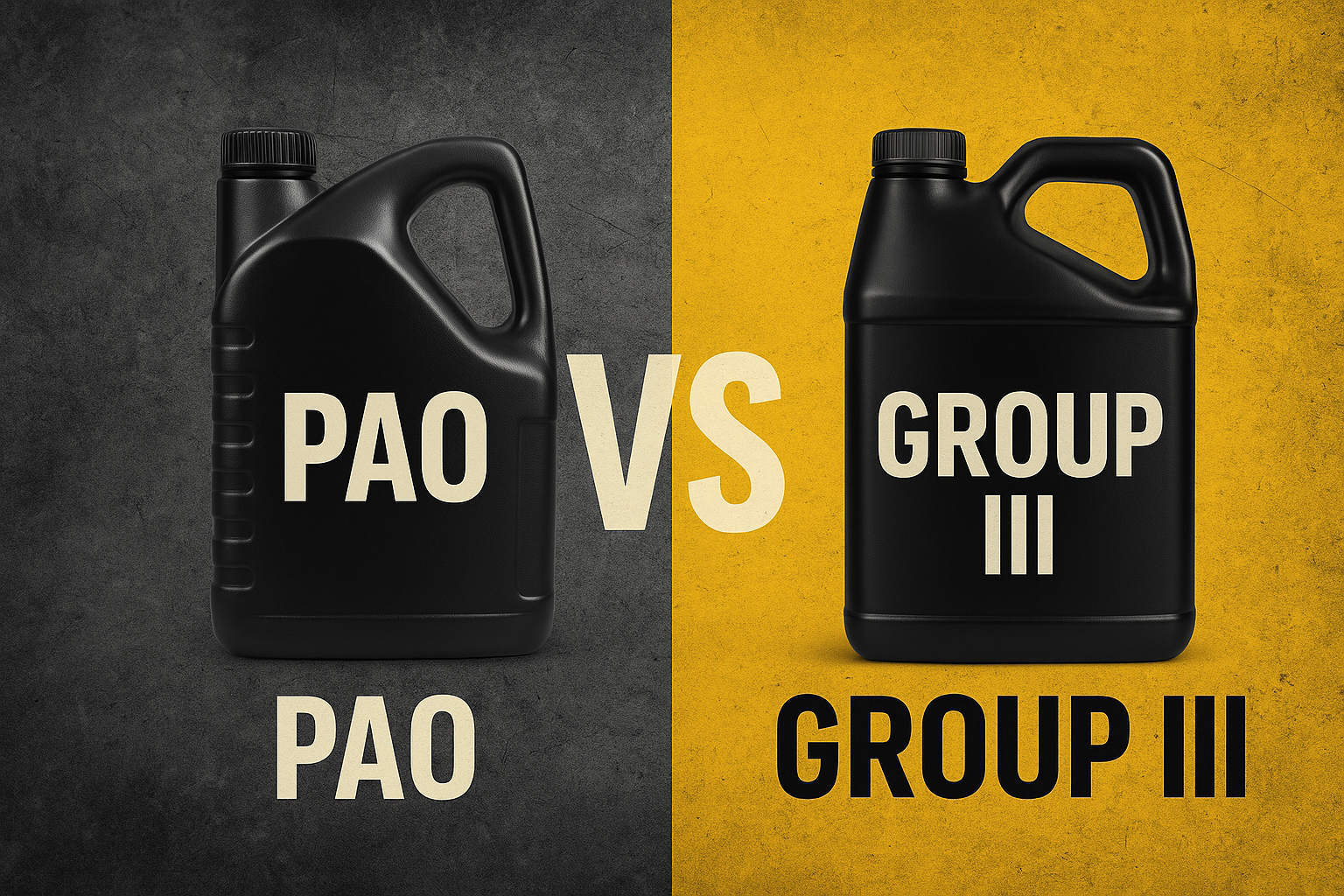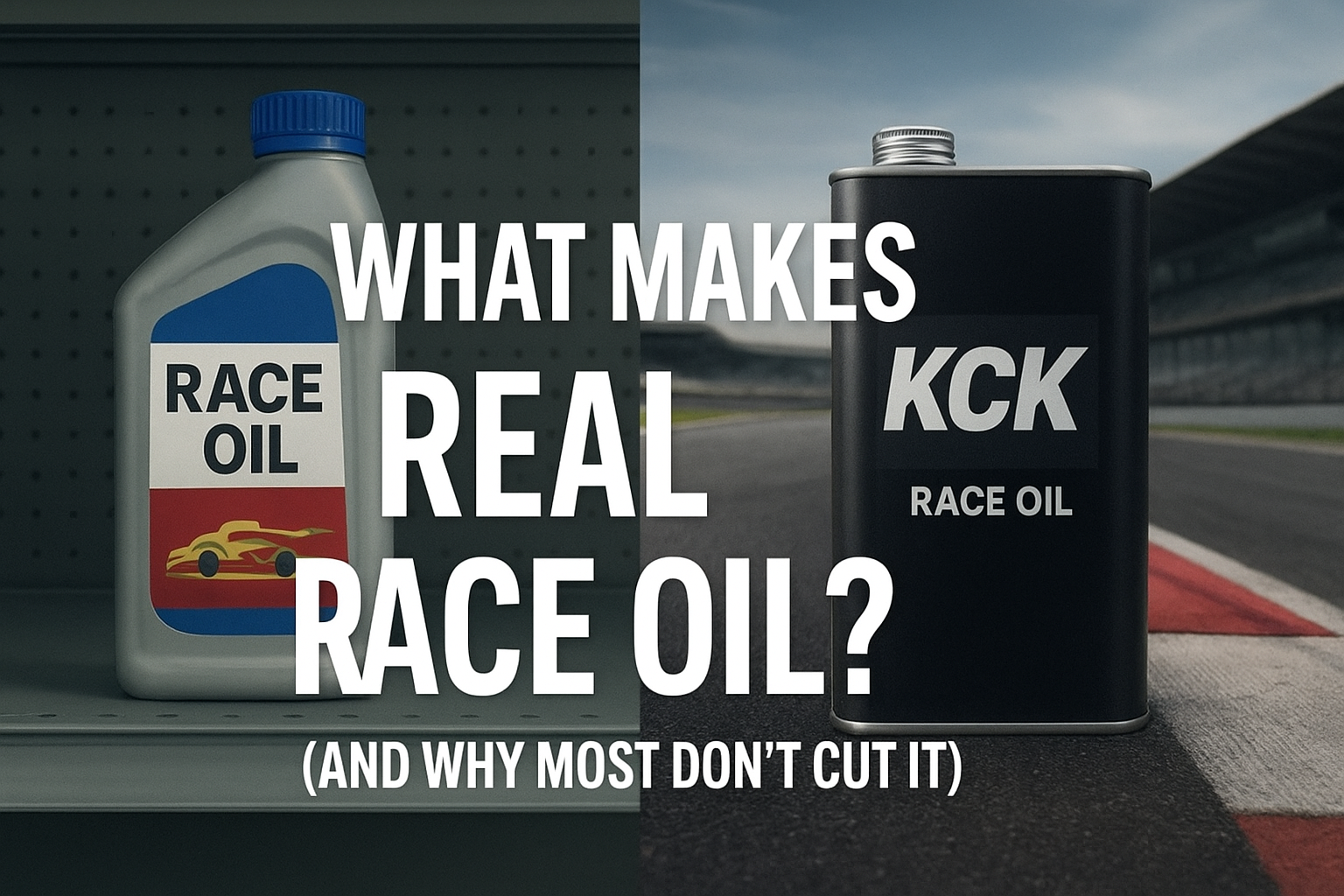What Makes a Real Race Oil? (And Why Most Don't Cut It)
You’ve seen the labels — “Race Formula,” “Track Blend,” “Motorsport Series” — but most of them wouldn’t last a single lap in a proper race car.
Let’s get one thing straight:
A real race oil isn’t just a thicker version of a street oil with a fancy name. It’s a chemically-engineered weapon, purpose-built to handle extreme conditions that street formulations can’t even comprehend.
Here’s what separates the contenders from the pretenders.
1. Real Race Oils Are Formulated for Load — Not Longevity
Street oils are engineered for long drain intervals, emissions compliance, fuel economy, and smooth operation. Race oils? They're built to survive hell, even if that hell only lasts a few hours or even just seconds!
-
No weak base oils. Real race oils are built on premium Group IV (PAO) and Group V (Ester) platforms — not bulk Group III.
-
No cost-cutting additives. Everything in the bottle has a job. Nothing is filler.
-
No compromises. Race oils aren’t chasing warranty coverage or economy. They’re chasing lap times.
KCK oils are built track-first — because race cars don’t have a check engine light.
2. Additive Chemistry That Hits Hard and Fast
In motorsport, it’s all about instant protection. Race engines don’t have time to “warm up nicely” or “bed in.” They fire up and go straight into combat.
A real race oil needs:
-
Massive anti-wear protection (think high-Zinc, Phosphorus, and Moly levels)
-
Friction modifiers for power and response
-
Thermal stability to laugh at 130°C+ oil temps
-
Shear stability that doesn’t give up over 8000+ RPM
Every KCK race oil is blended with this in mind — from our Extreme 40–70 Nitro blend to our RE36 10W-40 PAO formula. We don’t “fortify” our oils with off-the-shelf boosters — we build them properly from the first drop.
3. Zero Emission-Related Compromises
Modern passenger oils (API SN, SP etc.) are strangled by chemical limits to protect catalytic converters and DPFs. That’s fine for a Corolla. But on a race track? It’s a disaster.
-
Zinc capped? No thanks.
-
Low ash formulas? Wrong battlefield.
-
Eco viscosity targets? Get outta here.
True race oils are unrestricted. We use high-performance additive levels to match the extreme conditions they’ll see. No apologies.
4. Hot Blending: The KCK Advantage
Here’s the secret sauce: KCK blends our race oils hot. Why does that matter?
Hot blending:
-
Ensures better additive solubility
-
Prevents fallout and settling in storage
-
Guarantees consistent protection at extreme temps
It’s a more expensive process. It’s slower. Most companies skip it. We don’t.
Because when your engine’s at 8000 RPM and 135°C, you’ll thank us.
5. Real Race Oils Don’t Try to Be Everything
You want to run your daily driver and track car on the same oil? That’s cute — but not smart.
Real race oils are not daily oils:
-
They don’t meet API/ILSAC certifications
-
They don’t care about long OCI
-
They don’t baby emissions systems
But if your engine is making serious horsepower or turning serious RPM, they’re your best insurance policy.
So... Are You Running a Real Race Oil?
If your oil:
-
Comes from a supermarket
-
Cost less than a decent bottle of bourbon
Then no, you’re not.
But if you’re running KCK:
-
Built from premium base oils
-
Hot-blended with race-grade chemistry
-
Tuned for real-world motorsport
-
Backed by decades of championship results
Then you’re good. Very good.
Real Race Cars Deserve Real Race Oils
KCK didn’t build our reputation on fluff. We built it on finish lines, dyno sheets, and blown minds.
Because in racing, “good enough” blows up.
And KCK Lubricants only builds great.





